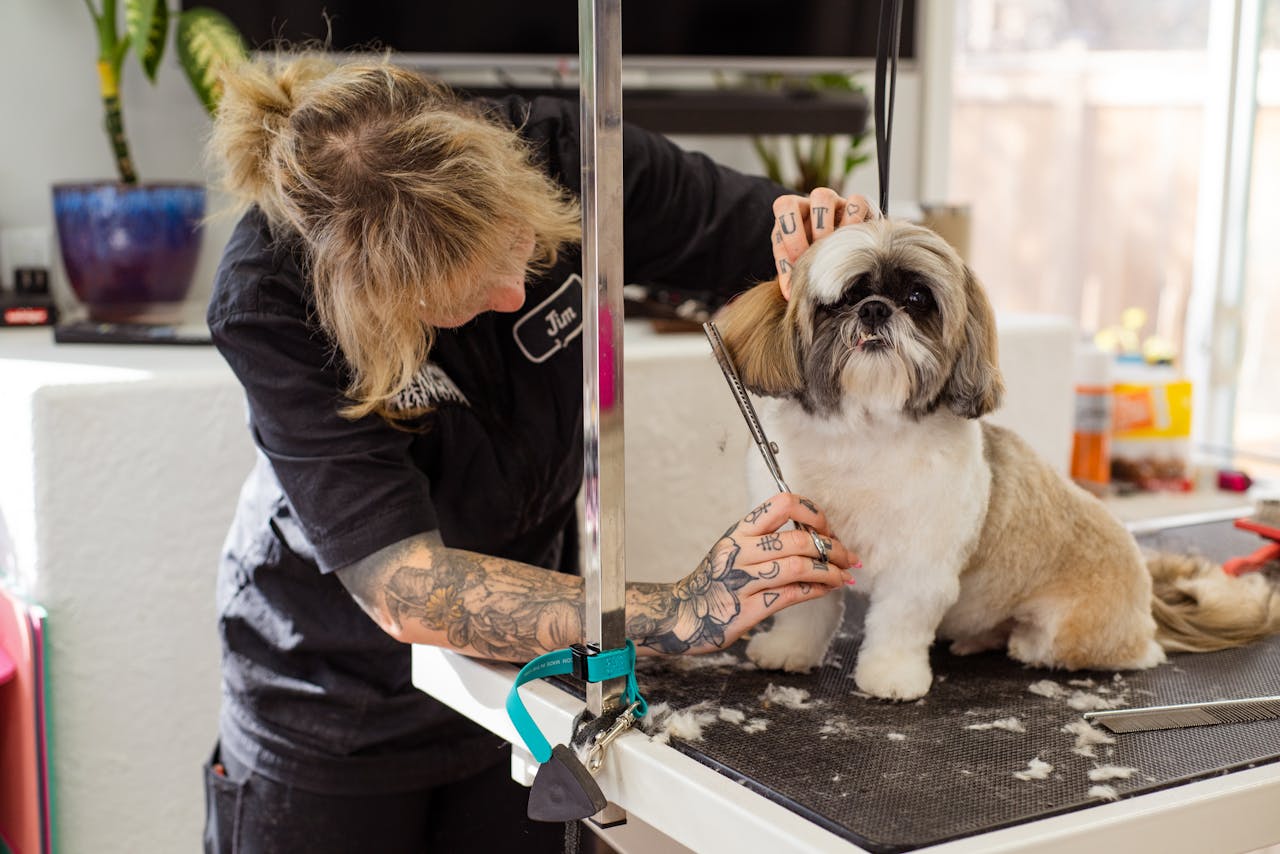
Every dog deserves to look and feel their best — shiny coat, trimmed nails, and fresh-smelling fur. Regular grooming isn’t just about beauty; it’s essential for your dog’s health and comfort. Many pet owners today are tempted to handle grooming at home to save money or bond with their pup. But when it comes to scissors, clippers, or delicate areas like ears and paws, a little mistake can lead to discomfort or even injury. So, what grooming tasks can you safely handle at home, and when should you trust the professionals? Let’s break it down.
Dog grooming involves more than just a bath. It’s a combination of brushing, bathing, nail trimming, ear cleaning, and coat maintenance. The frequency depends on your dog’s breed, coat type, and lifestyle. For example, short-haired breeds need less maintenance than long-haired or curly-coated dogs.
Understanding these basics helps you know what can safely be done at home — and when it’s time for expert help.
DIY grooming can be a fun and rewarding experience for both you and your dog.
Grooming your dog at home builds trust and strengthens your bond. The hands-on attention reassures your pet and helps them stay comfortable with touch.
Home grooming saves you money on regular salon visits, especially for small tasks like brushing or paw care.
While grooming, you can spot bumps, fleas, redness, or dry skin early, allowing quicker veterinary care.
Before diving in, make sure you have the right tools:
Always groom in a calm, well-lit area where your dog feels relaxed and safe.
Some grooming tasks are simple and safe to do yourself — especially with patience and care.
Regular brushing keeps your dog’s coat shiny and removes loose fur. Bathing once a month (with dog-safe shampoo) helps control odor and skin health.
If your dog is calm, you can trim small portions of the nail every few weeks. Just avoid cutting too close to the quick (the pink area with nerves).
Light ear cleaning and brushing with dog-specific toothpaste can help prevent infections and bad breath.
These are simple but effective ways to maintain your dog’s hygiene between professional sessions.
Even with the best intentions, home grooming has its risks:
If your dog becomes restless or fearful during grooming, stop immediately — forcing it can make future sessions harder.
Some grooming tasks are better left to trained professionals:
Professional groomers have the right training and equipment to handle these tasks safely.
Professional groomers do more than just make your dog look cute — they protect your pet’s health.
They know how to handle anxious dogs, use correct tools, and avoid injuries.
Each breed has different grooming standards. Professionals understand coat types and tailor cuts accordingly — something that’s hard to do at home.
Regular professional grooming can help detect:
Plus, treatments like exfoliating shampoos, paw soaks, and de-shedding can dramatically improve your dog’s coat and comfort.
| Aspect | DIY Grooming | Professional Grooming |
| Cost | Budget-friendly | Higher upfront, but thorough |
| Safety | Risk of mistakes | Trained, experienced handling |
| Convenience | Anytime at home | Scheduled visits |
| Results | Basic cleaning | Salon-quality finish |
| Health Insight | Limited | Expert detection of issues |
The best approach is a combination of both — handle small tasks at home and schedule full grooming sessions every few months.
Professional groomers often provide luxurious add-on services such as:
These specialized treatments go beyond what’s possible at home, keeping your dog healthy and pampered.
When selecting a groomer, look for:
Ask questions like, “Do you use hypoallergenic shampoos?” or “Can I see the grooming area?” A good groomer will always welcome transparency.
This balance keeps your dog looking fresh, reduces shedding, and promotes overall health.
Grooming your dog is more than a beauty routine — it’s an act of love and care. While you can safely manage certain tasks at home, professional groomers bring expertise, precision, and care that ensures your pet’s complete wellbeing.
The key is to find the right balance — maintain your dog’s hygiene at home, and let the professionals handle the rest. Your furry friend deserves nothing less than the best care possible!
This store is the best! I get my poodle groomed here and Lynn does a great job. The store smells really good and the puppies are so cute. I highly recommend you shop at Waggs.
~ Dylan Morris